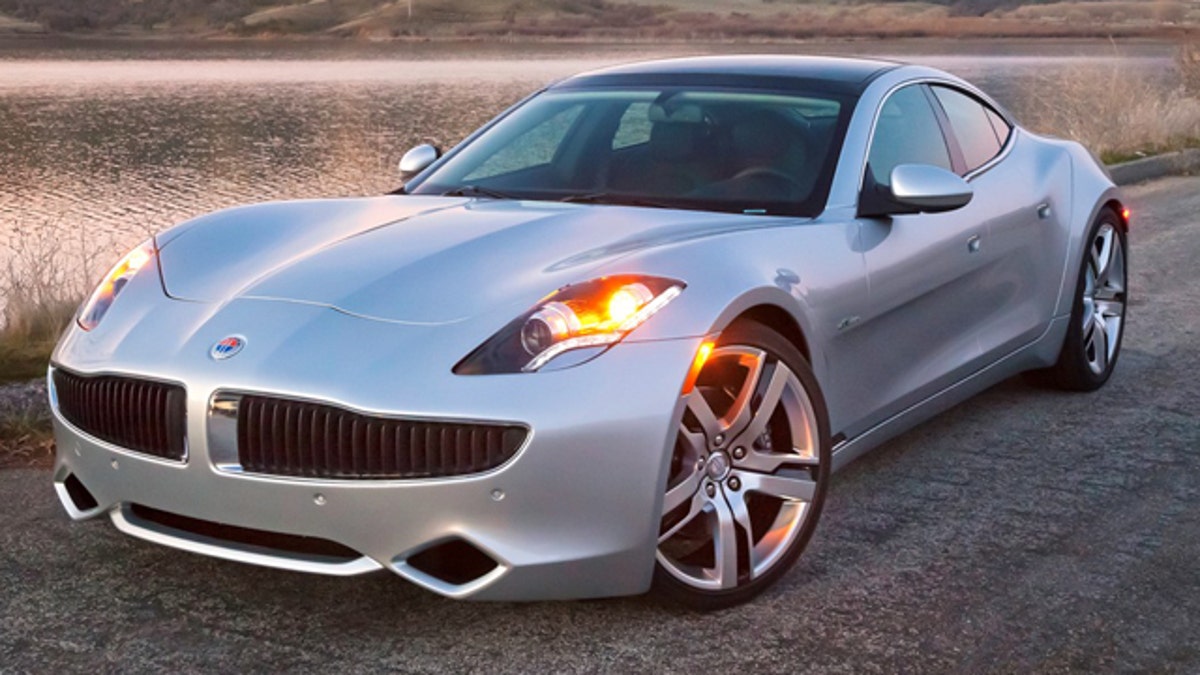
2012 Fisker Karma (Fisker)
California-based startup automaker Fisker will not be delaying the introduction of its second extended range electric car, known as “Project Nina,” despite a report in the News-Journal of Wilmington, Delaware that production had been pushed to mid-2013.
Fisker spokesperson Roger Ormisher clarified the situation to FoxNews.com, saying that the start of pre-production for the Nina remains on track for late 2012, but deliveries of the car to customers won’t begin until mid-2013 when the assembly plant is fully on line, and that this has always been the plan. The $47,500 compact sports sedan is being produced at a former General Motors facility in Wilmington.
Project Nina is being developed with the help of a $359 million loan from the Department of Energy. Along with the sedan, additional models including a coupe and crossover are expected. Vice President Joe Biden, one of the few people outside of the company who has seen designs for the car, has described it as a “four-door Ferrari.”
Biden Spills Beans on Automaker's Full Line of New Vehicles
Similar to the way that the Chevrolet Volt operates, the Nina will be able to run on battery power for an undisclosed distance, or by using a small four-cylinder engine that Fisker is buying from BMW to generate electricity for longer trips. Fisker expects to build 100,000 Ninas a year for sale in the United States and abroad, creating at least 2,500 jobs in the process.
After several delays, the larger, more luxurious $96,895 Karma officially went on sale this week after receiving official EPA certification. According to the federal agency, the four-seat sedan is capable of travelling 32 miles on battery power alone while using the equivalent energy of a conventional automobile that gets 52 mpg. It has a fuel economy rating of 20 mpg in extended-range mode when it is being powered by its General Motors-supplied turbocharged 2.0-liter four-cylinder engine.
As recently as September, Fisker had said that the Karma would achieve up to 100 mpg and have an all-electric range of 50 miles per charge. In a statement released to the press announcing the EPA rating, company founder Henrik Fisker wrote that “we firmly believe that most owners will get up to 50 miles of driving range on a single charge and will use our electric-only mode most of the time they drive the car.”
Ormisher adds that the company believes the 20 mpg rating is misleading because the figure combines city and highway driving, and most owners will keep the Karma in electric mode when driving it around town. On the highway, the fuel economy should be improved. Unlike the Chevrolet Volt, which depletes its battery before engaging its internal combustion engine, Karma drivers have the ability to switch between the battery pack and range-extender at any time.
The Karma is currently built for Fisker in Finland by automotive supplier Valmet. Fisker plans to sell 15,000 of the vehicles worldwide each year, and has previously indicated that it could move production to Delaware when it is redesigned for the 2016 model year. The automaker received a separate $169 million loan from the Department of Energy to complete engineering work on the Karma at its facilities in Anaheim, California and Ann Arbor, Michigan.



















